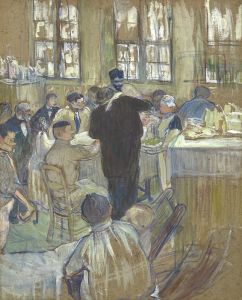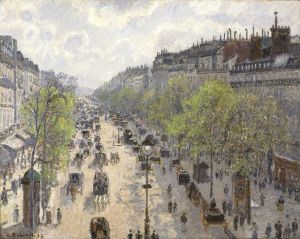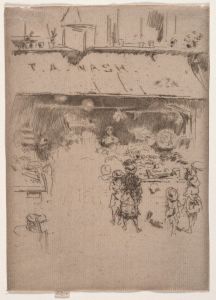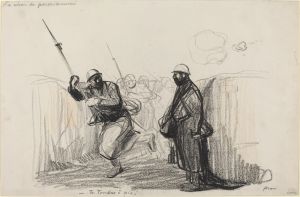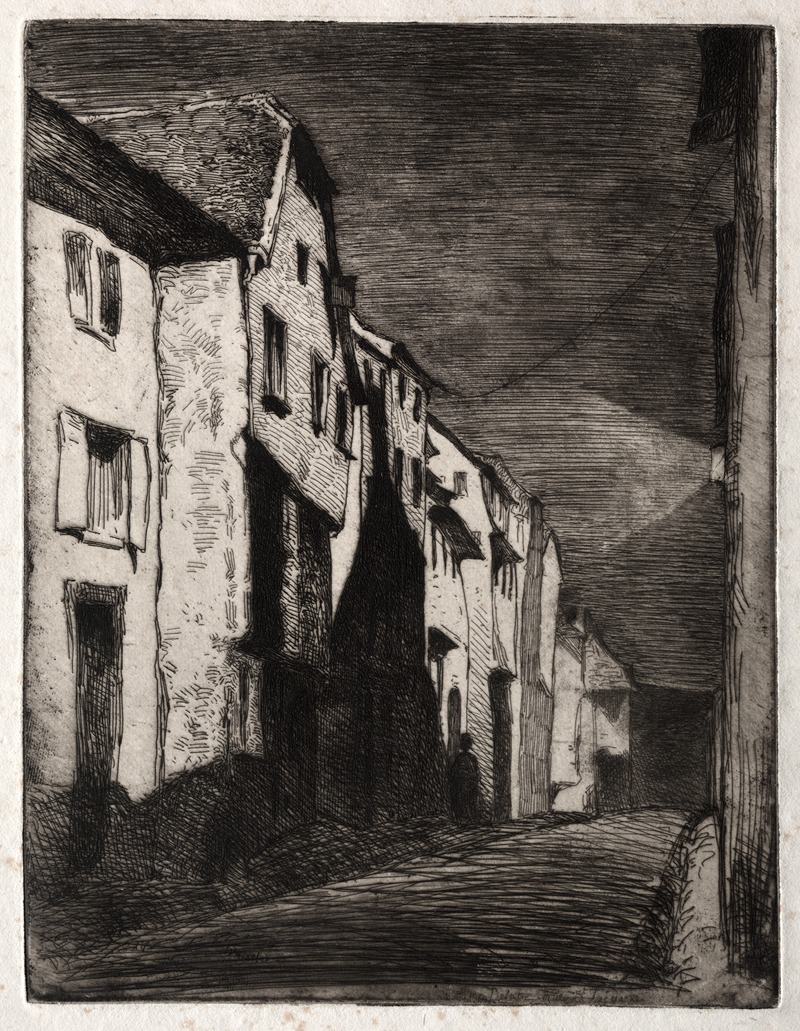
Street in Saverne
A hand-painted replica of James Abbott McNeill Whistler’s masterpiece Street in Saverne, meticulously crafted by professional artists to capture the true essence of the original. Each piece is created with museum-quality canvas and rare mineral pigments, carefully painted by experienced artists with delicate brushstrokes and rich, layered colors to perfectly recreate the texture of the original artwork. Unlike machine-printed reproductions, this hand-painted version brings the painting to life, infused with the artist’s emotions and skill in every stroke. Whether for personal collection or home decoration, it instantly elevates the artistic atmosphere of any space.
"Street in Saverne" is a painting by the American-born artist James Abbott McNeill Whistler, who is renowned for his contributions to the art world during the late 19th century. Whistler was born on July 10, 1834, in Lowell, Massachusetts, and he spent much of his career in Europe, particularly in London and Paris. He is best known for his distinctive style and his influence on the Aesthetic Movement, which emphasized the importance of beauty and visual harmony in art.
The painting "Street in Saverne" was created during Whistler's travels in France. Saverne is a small town located in the northeastern part of the country, in the Alsace region. This picturesque town, with its charming streets and historic architecture, provided a rich source of inspiration for Whistler. The painting captures a quiet street scene in Saverne, showcasing Whistler's keen eye for detail and his ability to convey the atmosphere of a place.
Whistler's technique in "Street in Saverne" reflects his interest in capturing the effects of light and shadow. He often employed a limited color palette and delicate brushwork to create a sense of depth and mood. In this painting, the muted tones and subtle contrasts highlight the tranquil nature of the scene, inviting viewers to appreciate the simple beauty of everyday life.
Throughout his career, Whistler was influenced by various artistic movements and styles. He was particularly drawn to the works of the French Realists and the Barbizon School, which emphasized the importance of painting directly from nature. This influence is evident in "Street in Saverne," where Whistler's attention to detail and his focus on capturing the essence of the scene align with the principles of these movements.
Whistler's work was not always well-received during his lifetime, and he often faced criticism from art critics and the public. However, he remained steadfast in his artistic vision, and his contributions to the art world have since been recognized and celebrated. Today, Whistler is regarded as one of the most important artists of the 19th century, and his works are held in high esteem by art historians and collectors alike.
"Street in Saverne" is a testament to Whistler's skill as a painter and his ability to find beauty in the everyday. The painting is part of a larger body of work that showcases his diverse talents and his commitment to exploring different subjects and styles. Whistler's legacy continues to influence contemporary artists, and his works remain an important part of the art historical canon.
In summary, "Street in Saverne" by James Abbott McNeill Whistler is a notable example of the artist's ability to capture the essence of a place through his distinctive style and technique. The painting reflects Whistler's interest in light, shadow, and the beauty of everyday scenes, and it stands as a testament to his enduring influence on the art world.







